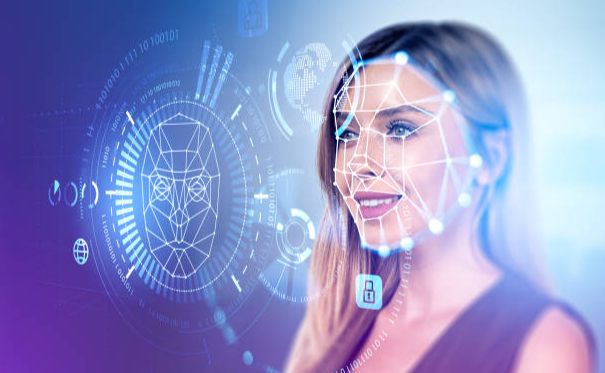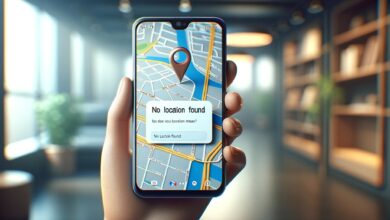Explore Key Benefits, Use Cases and Accuracy of Face Verification System

Face verification services have transformed the security process and provide a seamless or efficient way to validate one’s identity. By using advanced facial recognition algorithms, the advanced technology revolutionises different industries, from banking and e-commerce to travel and law enforcement.
In 2021, the facial recognition market was estimated to be around 5 billion U.S. dollars. However, experts project significant growth in the coming years, with the market expected to reach a staggering $12.67 Billion by 2028. This remarkable surge in market value reflects the increasing recognition and adoption of facial verification technology across diverse industries, showcasing its immense potential and impact on improving security measures.
What is Facial Recognition?
Facial analyzer software plays a crucial role in recognizing and verifying an individual’s identity based on their facial features. This technology provides advanced facial recognition capabilities by analyzing and estimating various facial attributes within an image. Its applications range from identifying individuals in videos or images to determining if two pictures depict the same person. Additionally, it enables face searches within extensive databases, further enhancing its functionality.
Biometric security systems extensively utilise facial recognition to establish secure and unique identification during user onboarding, login processes, and overall user authentication. Furthermore, face analyzer technology is widely integrated into personal and mobile devices to strengthen device security measures, ensuring robust protection.
Benefits of Facial Recognition Technology
Here are a few face recognition system advantages:
- Heightened Accuracy: Facial recognition provides a more reliable method of verifying individuals than relying solely on email addresses, mobile numbers, IP addresses, or mailing addresses. Certain exchange services, such as cryptocurrency and stock platforms, now rely on facial recognition to ensure the security of their clients and their assets. This shift demonstrates the improved accuracy of facial recognition technology and its ability to enhance overall authentication processes.
- Improved Security Efficiency: Facial recognition exceeds other biometric technologies such as retina scans or fingerprints. By supporting multi-factor authentication, it also puts in an extra layer of safety verification. Moreover, its speed and convenience make it an authentic choice with fewer touchpoints that are required to embed PINs or passwords.
- Seamless Integration: Face recognition technology can easily integrate with different security software systems. For example, smartphones have front-facing cameras equipped with built-in support for facial recognition software code or algorithms that allow easy adoption.
Facial Recognition Technology Use Cases
A few practical implications of a face recognition system are listed below
- Cyber Security
Organisations employ facial recognition technology as a robust cybersecurity measure, replacing traditional passwords. Its implementation significantly bolsters security measures by providing a more challenging barrier for unauthorised access.
Facial recognition technology is known for its accuracy and convenience, serving as an effective tool for unlocking smartphones and other devices securely. This advanced security feature offers a seamless and reliable authentication method, enhancing user experience while ensuring robust protection against unauthorised entry.
- Fraud Detection
Organisations use facial recognition online to establish unique user identification making a new account on any online platform. Once implemented, facial recognition can be utilised to identify the genuine account holder in situations involving suspicious or potentially risky account activity.
- Banking
Users authenticate transactions by thoroughly looking at their computer or phone instead of using two-step verification or one-time passwords. Similarly, facial recognition is usually needed for authorising payments during cash withdrawals and ATM transactions.
- Healthcare
Facial recognition is used to manage patient records. It simplifies patient registration procedures within healthcare facilities while also detecting emotion and pain in patients.
- Border and Airport Control
A limited number of airports employ biometric data as a substitute for conventional passports, helping travellers to skip long queues and quickly proceed through an automated terminal to reach their boarding gates. Nonetheless, face recognition technology immensely reduces wait times for e-passports and enhances overall security measures.
Is Facial Recognition Accurate?
Facial recognition algorithms exhibit near-flawless accuracy under outstanding conditions, but their performance is lower in real-world scenarios. Controlled environments usually portray a higher success rate, whereas real-world circumstances pose challenges that reduce the algorithm’s effectiveness.
Evaluating the overall success rate of this technology is complex since no single metric provides a thorough evaluation. In a controlled environment, facial verification algorithms demonstrate remarkable accuracy when comparing individuals to clear reference pictures like driver’s licences or mugshots.
However, achieving such high levels of accuracy necessitates precise conditions, including:
- Uniform positioning and lighting.es
- Unobstructed and specific facial features.
- Controlled colours and background.
- High-quality camera and image resolution.
As time passes, changes in facial appearance make it increasingly problematic to match older images accurately.
The Bottomline
Facial Recognition Service offers various benefits and uses cases among different industries. It offers accuracy in approving individual identity and enhances security measures with multi-factor authentication. However, current technological advancements push businesses to overcome limitations and improve accuracy.




